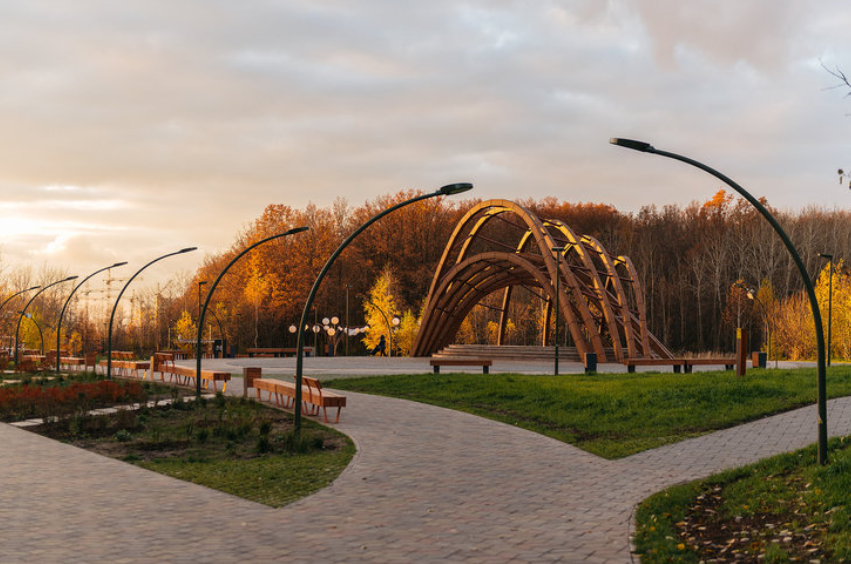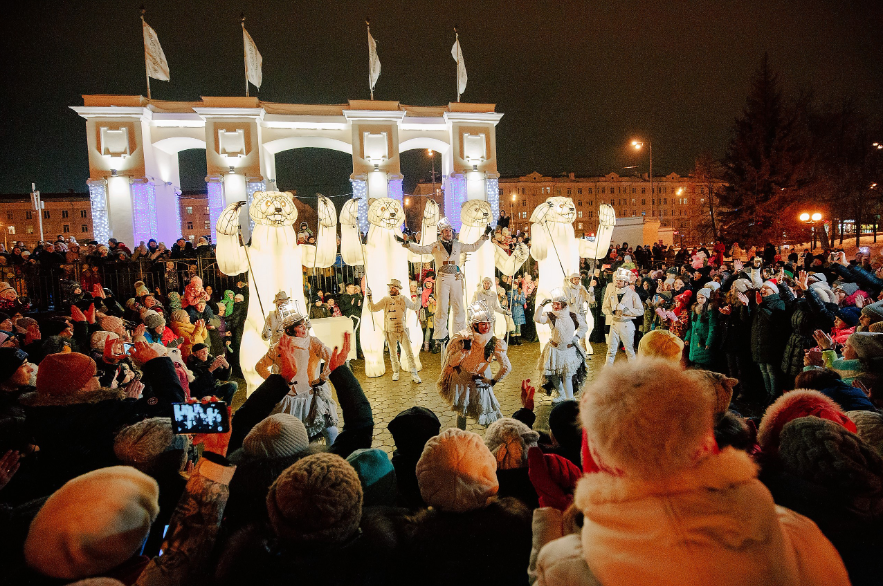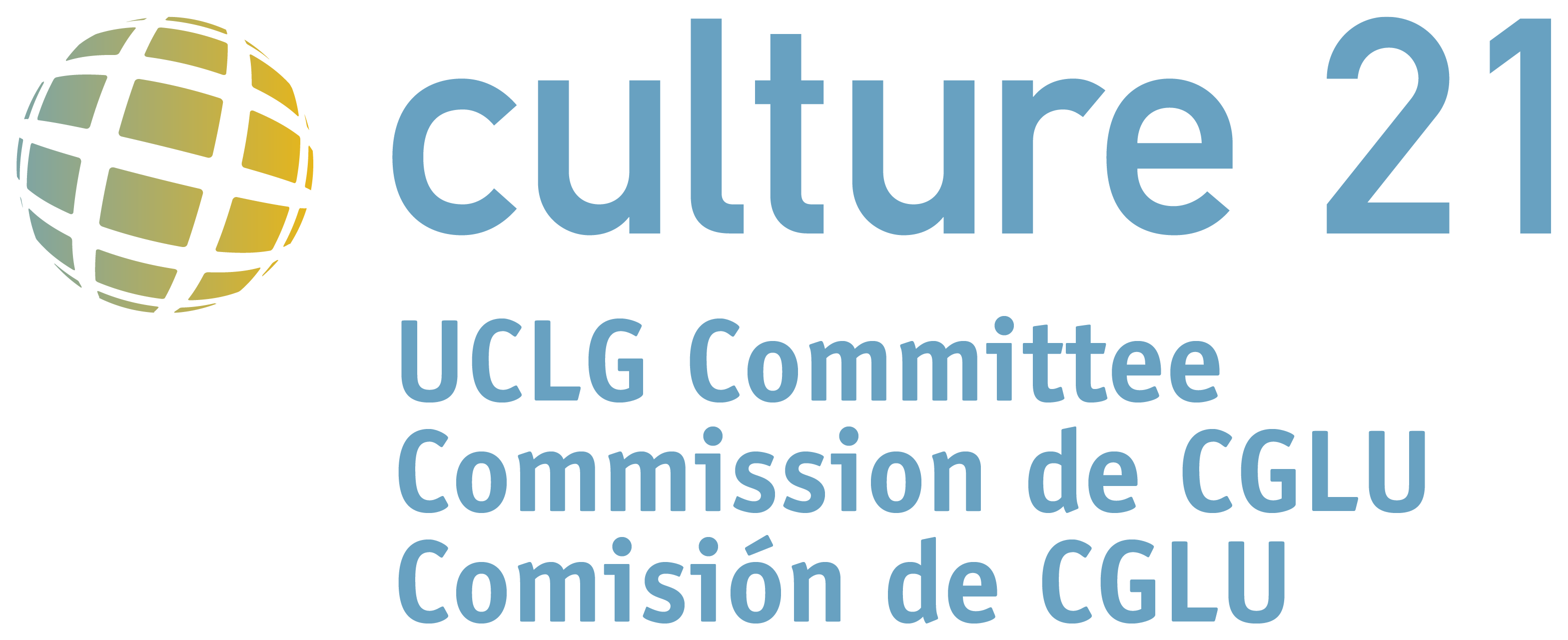- - © UCLG Committee on Culture / City of Kazan
- - © UCLG Committee on Culture / City of Kazan
- - © UCLG Committee on Culture / City of Kazan
City
Kazan
Main actors
City Government
Project area
Whole City/Administrative Region
Duration
Ongoing since 2014
Creating green spaces and supporting local design talent
The Parks and public gardens of Kazan project is aimed at creating and beautifying public spaces for residents and visitors. The key principle of the project is to actively involve residents and urban communities with the beautification process via open public project discussions.
The goal of the project is to enhance the quality of life of the local population by improving the city environment and creating comfortable and safe conditions for leisure and recreation activities.
This study case has been elaborated on the basis of a good practice provided by the City of Kazan and promoted by the Committee on Culture of United Cities and Local Governments. The original document can be found here.
In 2005, on the verge of celebrating its 1000th anniversary, the City of Kazan local government implemented a rapid and significant transformation strategy: among many initiatives, it addressed issues including dilapidated housing in the city center, opened its first underground railway stations, and due to hosting the XXVII World Summer Universiade it transformed the city's road network. Simultaneously, the historical center was reconstructed, and modern sports infrastructure emerged throughout the city.
In 2014, the City announced the Green Record program. 140,000 trees and 64,000 shrubs were planted in Kazan, and more than half a million square meters of new lawns were laid. As a next step, the Blooming Kazan program was implemented, seeing more than 6 million flowers planted in the city every year and encouraging local cafes and retail shops, businesses and social institutions to develop and design flowers-made art objects.
It became clear that the above measures were not enough and more professional approaches to design was required. Within the framework of the 100 Hundred Squares program, students from the Kazan State University of Architecture and Engineering (KSUAE) joined the project to design and create new art objects.
Finally, with the creation of a global program for the development of urban public spaces, a creative group of "Architectural Troopers" emerged in Kazan. The goal of the program was to have a significant impact on the quality of citizens’ life by changing the socio-cultural environment and building parks and public gardens instead of the usual shopping centers. 2015 was declared “Year of Parks and Public gardens” in the Republic of Tatarstan, 2016 - “Year of Water Protection Zones”, and 2017 - “Year of Public Spaces Development”.
From 2015 to 2017, 36 parks and public gardens were created in Kazan. Each with its own unique features and comfortable environment. The key issue in the design of these parks was to make them popular with the citizens of Kazan. In this context, principles for "participatory design" were developed, and residents, and activists in particular, were invited to discuss the tasks ready for implementation, and they were then fully involved in the design phase, together with architects in charge of technical development.
As a result, all park development projects are initially discussed during public meetings, as well as during workshops, focus groups and project seminars. After the final approval of the project by residents, the park design is approved for implementation. This participatory process guarantees significant community participation, business sector engagement, as well as a high number of quality of events and cultural programming in the parks.
In addition, at the design stage of the new parks and renewal of existing ones, each park was allocated cultural codes matching the historical context of the territory, the specific needs of visitors and events tailored to this specific context. For example, the Black Lake Park located in the very center of the city, was identified as a historical park, reflecting the city’s cultural heritage, and a dedicated place for Kazan’s intellectuals. It became a venue for events such as:
- The summer book festival, which attracted dozens of publishers, authors and more than 15,000 visitors over the weekend. The Open Food Market festival, where high-quality samples of the Kazan’s best gastronomic offerings were presented.
- The Pechin Bazaar national fair, with an emphasis on Tatar fashion and culture, organized by the Tatar youth community.
A charity market with the participation of the best designers in the city.
In 2015, the Kremlevskaya naberezhnaya, one of the main walking areas of the city, was opened. It hosts a large number of summer and winter events for tourists and citizens. During warm months, it holds art classes for adults, sports training, salsa master classes, bachata and kizomba, poetry readings accompanied by pianoforte, as well as various competitions and flash mobs, among other attractions. It is also possible to rent bicycles and velomobiles.
In addition, the park in Gorkinsko-Ometevsky forest was built from scratch in a record time of 9 months. For many years, only skiers would venture into this forest with an area of nearly 100 hectares. After the opening of the park, a large micro district for 350,000 inhabitants was built and equipped with a leisure area. The Park focuses on sports and environmental themes, with a unique author's playground "Chekharda", a 5 km long illuminated ski slope, an ecological area with red book plants, and a large festival stage which, on an evening as its peak, is attended by 20,000 visitors.
In December 2017, a second round of facilities at Gorkinsko-Ometyevsky forest was launched. This included a Container park for commercial facilities, as well as a “pump-track”, a unique and unparalleled circuit for cyclists.
Intensive work has also been carried out regarding the improvement of recreation areas, including city embankments. One of the largest projects undertaken in recent years is the eco-rehabilitation of the Lebyazhye lake system. Works on the lake are undertaken in close cooperation with environmentalists, biologists and geologists, and take recommendations from the Environmental Council into account.
Finally, the city’s first subbotnik (community workday) was held in the Gorkinsko-Ometevsky forest park, promoting autonomous garbage collection. Schoolchildren and their parents cleared Gorky Forest of household garbage, which was then subsequently sent for sorting and recycling.
Within the framework of the Year of Ecology, the Eco-Center "DOM" was opened in the park at Gorkinsko-Ometevsky Forest. This Eco-Center is a new space that is aimed at increasing the ecological self-awareness of the population through its thematic educational culture.
The lead agency for the project is the Kazan local government. The implementation of Parks and public gardens’ projects was carried with the support of Kazan City Mayor and Tatarstan Republic Assistant, Directorate of Parks and Squares. In addition, a new establishment within the Kazan City Hall was opened. Its scope of work includes maintenance and cultural programming of 14 renewed parks and public gardens. An open competition was held to pick up a Directorate team. As a result, 4 candidates were selected to fit the positions of park managers.
There are no specific evaluation mechanisms in place regarding this Initiative. However, it is to be noted that the number of events and holding applications from organizers in renovated public spaces has been increasing, generating higher business activities within park territories. During the summer season 2017, over 600 events were held in parks and public gardens. There was also an increase of the number of parks’ visitors, including in wintertime. During the winter holidays (from December 22, 2017 to January 8, 2018), 10 key park areas were visited by 178500 people.
Kazan was a candidate for the third "UCLG Mexico City – Culture 21 International Award" (November 2017 – May 2018). The jury for the award drew up its final report in June of 2016 and requested that the Committee on Culture promote this project as one of the good practices to be implemented through Agenda 21 for culture.
Local residents and activists in particular have shown an increased interest in the management of the city’s public parks through the “participatory design” process.
Parks are in a way the “lungs” of the city. Therefore, it is important to preserve them, as well as to educate citizens about environmental responsibility.
The tradition for organising open discussions with the residents of the city has persisted within the Park Administration Directorate, and the connections with nature and architectural and cultural concept of parks are still considered. The Directorate actively engages with a various range of stakeholders such as theaters, art unions, and musical bands.
On Map
The Map will be displayed after accepting cookie policy




